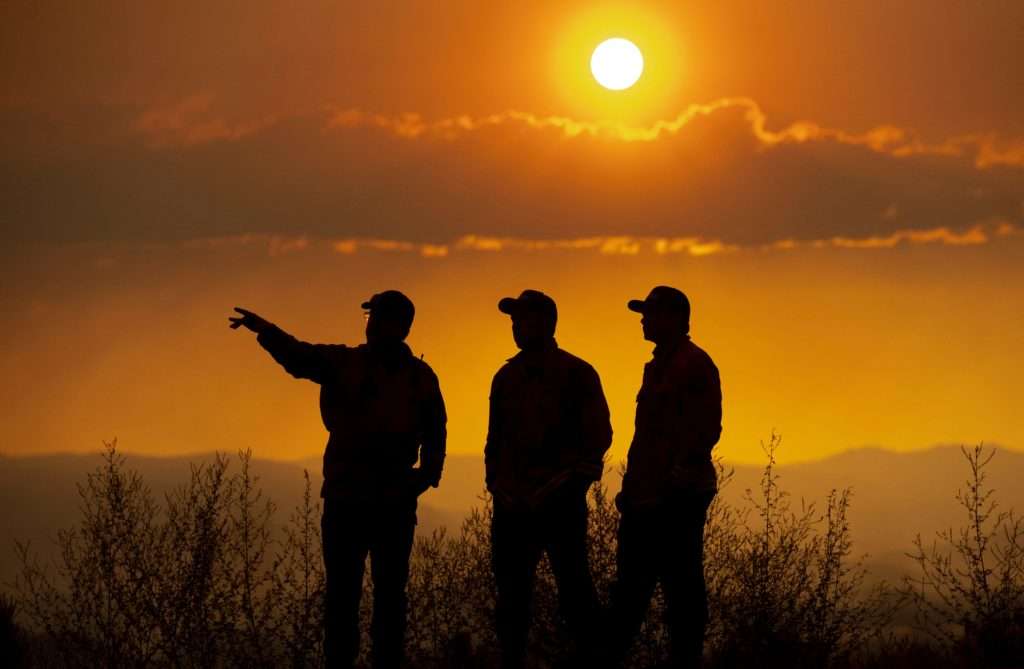BECKWOURTH, Calif. (AP) — Flames threatening campgrounds and cabins prompted evacuations and closed off a swath of Northern California forest as the state headed into another weekend of dry, scorching weather and the continuing threat of wildfires.
Hundreds of firefighters aided by aircraft were fighting the Beckwourth Complex, two blazes sparked by lightning that were carving their way through the eastern edge of the million-acre Plumas National Forest in the northern Sierra Nevada near the Nevada state line.
Campgrounds and homes around Frenchman Lake were under evacuation orders Friday and a nearly 200-square-mile (518-square-kilometer) area of the forest was closed because of the danger, fire information officer Pandora Valle said.
After a day and night of explosive growth, the fire covered more than 38 square miles (98 square kilometers) at midmorning Friday, causing containment to drop to 11%.
The flames were burning through pine, fir and chaparral turned bone-dry by low humidity and high temperatures, while ridgetop winds and afternoon gusts of up to 35 mph were “really pushing” the flames at times, Valle said.
The fire was one of several burning in the north, where several other large blazes destroyed dozens of homes in recent days.
In the region between the Oregon border and the northern end of the Central Valley, the big Lava and Tennant fires were significantly contained, and progress was reported at the Salt Fire as containment improved to 45%. The Salt Fire has burned 27 homes and 14 outbuildings north of Redding, which hit 100 degrees (37.7 Celsius) before 11 a.m. The Lava Fire destroyed 20 structures, including 13 homes, and damaged two structures. The Tennant Fire destroyed five buildings, including two homes.
In north-central Arizona, increased humidity slowed a big wildfire that posed a threat to the rural community of Crown King. The 24.5-square-mile (63.5-square-kilometer) lightning-caused fire in Yavapai County was 29% contained. Recent rains allowed five national forests and state land managers to lift public-access closures.
Climate change is considered a “key driver” of a trend that is creating “longer and more intense dry seasons that increase moisture stress on vegetation and make forests more susceptible to severe wildfire,” the agency said recently.
Fire crew officials will be briefing the community on progress Friday evening at the Chiloquin Community Center. The meeting will be streamed on the Facebook page for the Fremont-Winema National Forest beginning at 7 p.m.
In Oregon, pushed by strong winds, a wildfire fire in Klamath County grew from nearly 26 square miles (67 sq. km.) Thursday to nearly 61 square miles (158 sq. km.) on Friday in the Fremont-Winema National Forest and on private land. It was 0% contained, according to the an update posted on Facebook by the incident management team. Klamath County Emergency Management on Friday issued an immediate evacuation order for people in certain areas north of Beatty and near Sprague River.
In Idaho, Gov. Brad Little declared a wildfire emergency in the state Friday and mobilized the Idaho National Guard to help fight fires that had sparked across the state after lightning storms swept across the drought-stricken region.
Fire crews in north-central Idaho were facing extreme fire conditions and gusty winds as they fought two wildfires that threatened homes and forced evacuations in the remote and tiny community of Dixie about 40 miles southeast of Grangeville. Efforts were complicated in part because firefighting resources were stretched thin, fire managers said, and in part because the area has very challenging terrain covered with trees and plants that are dry from the ongoing drought.
The fires near Dixie, covering a combined 19.50 square miles (50.50 square kilometers), were among several that started after lighting storms swept through the region earlier this week.
Meanwhile, forecasters warned that much of California will see dangerously hot weekend weather, with highs in triple digits in the Central Valley, mountains, deserts and other inland areas because of strengthening high pressure over the state. Heat warnings did not include major coastal populations.
Death Valley could reach a staggering 130 degrees Fahrenheit (54 Celsius), the National Weather Service said.
California’s power grid operator issued a statewide Flex Alert from 4 p.m. to 9 p.m. Friday to avoid disruptions and rolling blackouts. Flex Alerts call for consumers to voluntarily conserve electricity by reducing the use of appliances and keeping the thermostat higher during evening hours when solar energy is diminished or no longer available.





